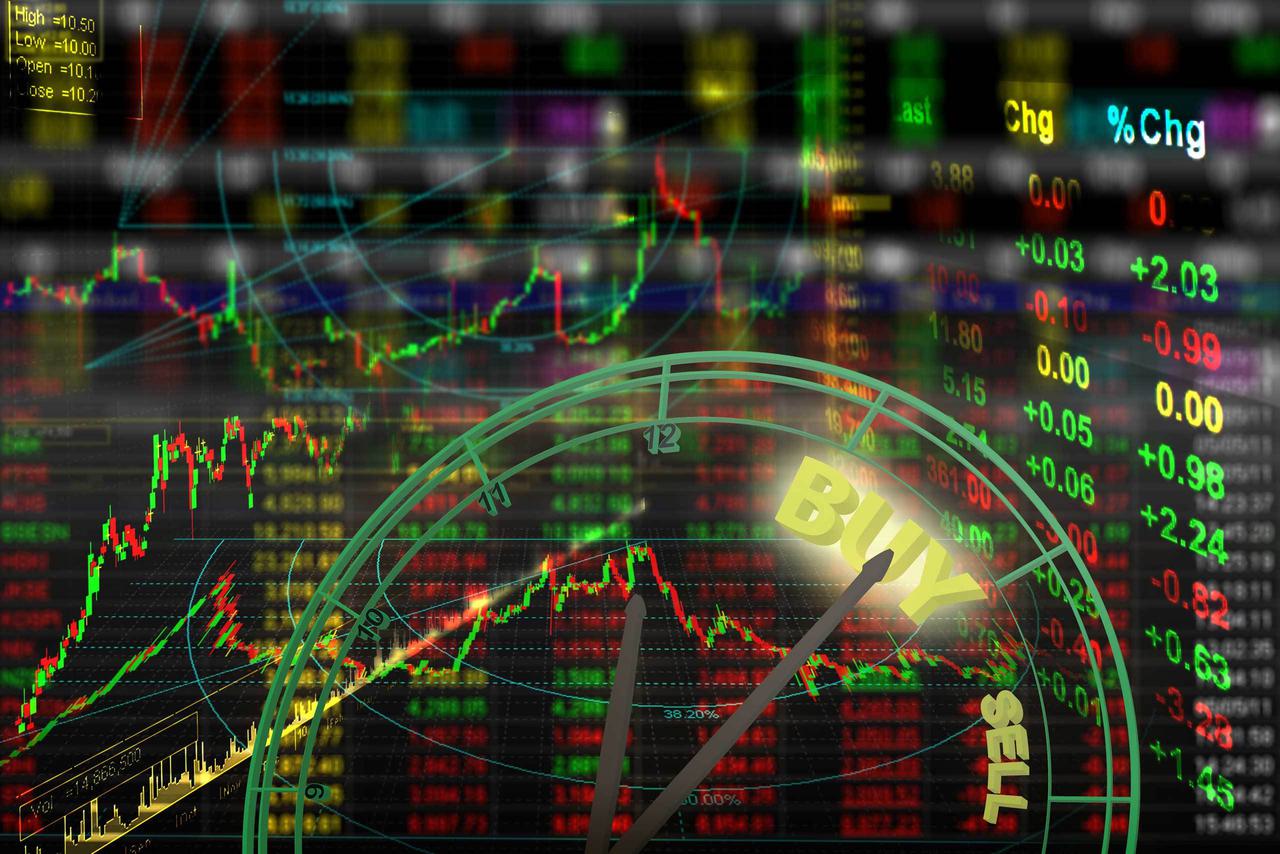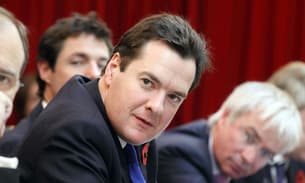
Robot wars: How high frequency trading changed global markets
A controversial trading practice may be living on borrowed time (Photo: Shutterstock)
Welcome to the world’s most intense electronic battle. It’s waged on world stock markets and the ammunition is tiny fractions of pennies, fired through super-charged computers. The object is to wipe out the opposition.
The theatre of war is a long way from the raucous bear pit of baying stock traders. Instead, capital is unleashed in a cavernous space, lined with banks of computer servers and chilled by air conditioning. Rather than the shouts of traders, orders to buy and sell come in electronic pulses; processed instantly in near-silence.
‘It’s high tech war,’ explained a City computer expert working for an investment bank. ‘When they’re doing a trade, they can blast it with full volume so you can’t get up.’
– former banker
Buy low, sell high remains the market’s mantra. But the age of computer-driven trading has ushered in speed and processing power. Trading times have accelerated exponentially. Markets are so fast today, a trade is now measured in microseconds – millionths of a second.
Allied to speed is staggering computer processing power. Now processors can assimilate transactions made on virtually every single exchange and assess who made the trade, all in the blink of an eye. This gives investors more ammunition in their battle to outmanoeuvre and second-guess rivals.
At this level, humans are out of the game. Instead, investment banks, fund managers and traders put all their trust on complex algorithms run by computers to buy and sell shares, with varying degrees of human involvement. And the fastest players of all are a new and evolving breed of market participant: the high frequency traders.
In the past five years, high frequency trading (HFT) has stormed the citidels of finance. Today it accounts for more than a third of activity on European markets and 70% in the US. Its dramatic rise to prominence has polarised opinion. Exponents say it has reduced trading costs and increased activity on markets – but critics point to two devastating US market collapses in which HFT played a central role. And now European policymakers are debating whether to impose severe limits on HFT. Influential figures are even calling for it to be banned.
Related story: Britain opposes MEPs seeking ban on high-frequency trading

The cash/time continuum
HFT takes place at speeds more commonly associated with particle physics. In the quarter of a second it takes you to blink, an HFT computer can carry out over 5,000 transactions.
Computers are locked in a permanent race against one another, and against the wider market, to perform millions of tiny, rapid trades, each yielding a tiny profit. There is no interest in actually owning a company’s stock. The game is to sell it on at a fraction of a penny’s profit very, very quickly. The tiniest delay is the difference between profit and loss.
So HF traders pay to place their servers close to an exchange’s, and invest in ultra-high speed feeds of market data. The reason? Whittling microseconds off ‘latency’ – the time it takes their message to reach the exchange and return.
Related story – Infographic: Trading at the speed of light
‘It’s become a technological race for traders trying to exploit quirks in human behaviour,’ says a former banker. ‘So what’s at a premium is the timing and getting hold of the data as quickly as possible.’
And with billions of microscopic transactions to monitor, detecting market abuse is increasingly becoming impossible for regulators. ‘Markets get manipulated. It does happen. And there are accidents sometimes,’ a City computer expert said.
Trading tactics
Forget Gordon Gekko: the new generation of financial masters of the universe are quantitative programmers, who write the sophisticated algorithms that HFT relies on. ‘Quants’ are advanced mathematicians rather than financiers, often educated to PhD level or beyond – although their pay is closer to a banker than an academic. A junior quant can expect to earn £50,000 or more.
The algorithms they design use a variety of tactics to hunt down profits on the stock exchange. Some programmes search out stocks that are rising, to cash in on the momentum. Others look for minuscule price variations between the same stock on different markets and seek to close the price gap.
Perhaps the most innovative, or feared (depending on what position you take), are behavioural algorithms. These hunt for clues an investor wants a specific stock. Gaining this prized intelligence requires gathering and crunching colossal quantities of data to second-guess rivals. HFT’s algos then buy the stock and sell it on to the original buyer for a tiny bit more than they paid.
Then there are murkier practices that cross the line into market abuse: tactics such as ‘quote stuffing’ – firing thousands of trades into the markets and cancelling them within microseconds, with the intention of slowing down the markets and profiting from the price differences. Or ‘smoking’ or ‘layering’: entering fake trades at artificially low or high prices, to mislead other market players. American regulators have already sanctioned at least one firm for this HFT strategy.
Prepare for takeoff
It was an arcane European Union directive that effectively launched this new era in financial trading. Called the Markets in Financial Instruments (Mifid) directive, it abolished the monopoly enjoyed by stock exchanges in each EU country in 2007 – although some, like London, had already started introducing competition. New exchanges opened and a wave of merger activity ensued.
Mifid’s aim was to force stock exchanges to compete. The theory went this would make transactions cheaper and more transparent. Its introduction incentivised exchanges to increase the amount of trading providing the perfect conditions for HFT to take off. With transactions ostensibly cheaper, HFT could profit on a huge number of transactions that yielded small margins.
The industry argue it’s not just HFT which benefits. Investors now enjoy reduced spreads – the gap between bid and offer prices, and trading fees have fallen. Most importantly, they claim, HFT boosts liquidity – the willingness of the market to buy what you’re selling and sell what you want to buy.
But storm clouds are gathering for HFT. It is also blamed for making markets more predatory and volatile, causing sudden spikes and dips as black boxes bet against one another at frenetic speeds.

The critics are becoming more vocal. Last weekend a senior European Central Bank policymaker called for the trade to be banned outright, while Andrew Haldane, the Bank of England’s head of financial stability, used a speech last year to call for ‘grit in the wheels’ to slow trading and ‘forestall the next crash’.
The complaints are the sound of vested interests at work, says Remco Lenterman, chairman of HFT industry body the European Principal Traders’ Association (Epta). ‘Initiatives to try to stop our members [are] because we make the market so efficient that it becomes less profitable for the financial industry,’ he said. ‘Clearly it’s a very disruptive technology.’
The price of progress?
Concern on the potential for market harm that HFT could bring is mounting. HFT’s reputation was severely dented by the ‘flash crash’ of May 6 2010, in which already choppy US stock markets dropped by 600 points inside five minutes – wiping nearly $1 trillion off share prices at a speed only possible with quantitative trading, before rebounding just as quickly.
Two years on, many in the financial markets are still shaken by the event.
‘It was Chernobyl for stock markets,’ said one observer.
‘It was a near-death experience,’ said another: had the fall happened at the end of a trading day, markets would have closed mid-crash, sparking panic on the international markets.
‘The Flash Crash was a near miss. It taught us something important, if uncomfortable, about our state of knowledge of modern financial markets,’ Haldane said in his speech.
– Kay Swinburne MEP
If this wasn’t bad enough, last month a malfunctioning algorithm in the US saw trading firm Knight Capital lose $440m in half an hour, causing market chaos in the process.
European stock exchanges say such events couldn’t happen here: they have safety features such as circuit breakers, which halt trading on a stock when prices move too sharply. On the London Stock Exchange (LSE), they kick in around 35 times a day – although during market stress last August, this rose to 170 times a day.
But such European measures may not, according to some, be enough. Only luck has prevented major crashes in the UK, several market observers have told the Bureau.
‘The flash crash could happen here: our system’s automatic stops would kick in automatically so it wouldn’t be as dramatic, but we could still have a 10% drop before the circuit breakers kick in,’ said Kay Swinburne, a former banker and Conservative MEP on the British government’s Economic Affairs Committee.
Certainty at a premium
The trouble is that getting clarity as to whether HFT harms Europe’s markets is not an easy task. The debate is characterised by apparently contradictory studies, claims and counterclaims.
‘A lot of the research is biased,’ an informed source said: many studies are commissioned by investment banks, who count HFT firms among their clients and use HFT strategies, and others with vested interests.
There are huge technical barriers to researching HFT’s impact on markets and trades – the raw datasets are massive, complex and scattered across multiple exchanges and trading platforms.
The lack of any conclusive evidence has allowed HFT to thrive with only limited regulatory understanding. There is not even a commonly accepted definition of what HFT actually is. ‘With the regulator understanding we are in a similar situation to how they handled off balance sheet and debt markets. The regulators are starting to realise that they know fuck all,’ said the City IT manager.
This uncertainty about HFT’s benefits or pitfalls has made European politicians nervous. They are now planning tough new measures on HFT in the revised Markets in Financial Instruments Directive (Mifid 2). The proposals, which include forcing high frequency traders to trade in all market conditions, pose a serious threat to HFT, MEPs told the Bureau.
As Europe debates HFT, the British government has launched the Foresight Review, which has commissioned a series of academic studies on HFT’s impact.
The LSE’s Professor Oliver Linton examined the overall quality of the UK’s markets. Examining daily data, he found no significant rise in volatility over the past 10 years. But nor did he find significantly more liquidity. In other words, the markets haven’t got worse since the advent of HFT, but they’re not much better either.
Experts at the Financial Crisis Observatory asked whether HFT could lead to crashes, concluding, ‘We believe it has in the past, and can be expected to do so more and more in the future.’ Though some of HFT’s supporters argue this position fails to reflect some markets have better systems to prevent a crash happening than others.
Drying up
Traditional investors, such as pension funds, complain HFT’s dominance of equity markets means the dice are loaded against them: a majority told a poll by the Foresight project they were finding it ever harder to access liquidity.
– City IT expert
The liquidity HFT claims to provide can also prove illusory – bids or orders vanish when traders go to use them, market observers told the Bureau. This is because the vast majority of messages signalling willingness to buy or sell are actually HFT’s attempts to probe the prices others will accept. These orders are cancelled in the blink of an eye – the ratio of cancelled to traded orders can be as high as 1,000:1. And in depressed markets, liquidity can simply evaporate.
‘A lot of the price discovery methods may seem dodgy,’ said the head of IT at a City bank. ‘HFTs might throw $5m on five exchanges [and] it looks like $25m liquidity. Big players have an advantage because they can afford the algorithms, be close to the exchanges and can manipulate the market.’
The argument from critics of HFT is that it makes it harder for pension funds and other institutional investors to buy large blocks of shares without being detected by behaviour-seeking algorithms.
‘Institutional investors today know the moment they begin to trade a large position at one price, it will likely be detected by software, which may then effectively front-run the order. In the past, it would have been arranged hush-hush over the phone by a block trading desk, and the trade size and price would generally appear only after a large order was placed. You can’t hide large position trades anymore,’ said Professor Bruce Weber, a markets expert.

This, critics point out, forces fund managers to buy or sell in smaller blocks in an attempt to hide what they are doing, pushing up transaction costs. Research commissioned by the EU has shown that the overall cost of buying shares has risen by 14% in three years, despite individual transaction costs having fallen.
Other costs are also incurred as many traders feel forced to join the technological arms race. ‘As HFT becomes more important it’s driven more market participants to invest more in trading technology,’ said Robert Talbut, chief investment officer of Royal London Asset Management.
A third of traditional investors polled by Foresight said the real cost of trading shares had risen, as the benefits of lower spreads and trading fees were offset by the need to invest in ever-faster equipment and staff costs.
Into the shadows
The rise of HFT has had other repercussions. It appears increasingly to be pushing traditional investors from mainstream exchanges, and onto conducting big transactions in ‘dark pools’ – off-exchange trading platforms operated by brokers, or even by exchanges, where shares are traded anonymously, without the prices being published in advance.
Market observers and traders alike say fear of having their trades detected and headed off by HFT computers are driving longer-term investors away from the ‘lit’ open markets. In Foresight’s poll, two-thirds of traditional investors said they used dark pools, especially for large orders.
‘There’s a perceived problem that strategies by HFT firms are picking off long-term only investors. That perception is why people on the buy side have moved significant amounts into dark pools,’ said a market observer.
This shift to dark pool trading raises a number of concerns. Trading in the dark is more expensive – it also affects the markets’ transparency, making it harder for other players to gauge prices.
In the UK, dark pools have almost tripled their market share in the last three years, to 3.3% of trading volume, an analysis of data from the Federation of European Securities Exchanges (FESE), by the Bureau shows. Today London’s dark pools are handling over €3bn of trades every 24 hours, and those close to the market point the finger at this rise as a response to HFT.
– Benoît Lallemand, Finance Watch
Consultancy Rosenblatt Securities estimates that across Europe, the share of trades changing hands on dark pools may represent up to 6.75% of turnover.
The meaning of markets
The rise in dark pools and the increasing difficulty of dealing in open, regulated markets add to a sense that the markets are no longer working as they should: they are separating from their original purpose.
‘I see [the] role of financial markets as matching up providers of capital with users of capital. I see HFT as absolutely nothing to do with investment. It is trading for tradings sake. It has no interest in a company’s fundamentals. Therefore I fail to see why it’s an activity we should be encouraging to be part of our market,’ said Robert Talbut.
‘We need to build financial markets that make sense for society and the economy as a whole. This means discouraging practices that only benefit high frequency traders, for example, and encouraging markets to serve end-users. It means helping to feed innovation and productive investment, in short: more investment and less betting,’ said Benoît Lallemand, senior research analyst at public interest advocacy group Finance Watch.
Despite the relative paucity of hard evidence to support many of the gut-felt criticisms of HFT, the overall view that HFT does more harm than good is gathering momentum in Europe. It is a view that is likely to influence the debate when MEPs meet later this month to agree the measures for Mifid 2.
Related story – Britain opposes MEPs seeking ban on high frequency trading
The Bureau understands there is broad support for forcing HFT players to keep trading in all conditions – ending the problem of trading opportunities vanishing in stressed markets. But a Foresight analysis of the proposals released just as MEPs returned from their summer break, warned this could ‘force high frequency traders out of the business of liquidity provision’.
The next three months represent a watershed for HFT. If the current tough measures stay on the table, the industry will have to change – and may even wither away.
Its fate is bound in with other Mifid market proposals including reining in commodity speculation and protecting investors. HFT may yet emerge unscathed in compromises inevitably struck between the Commission, the European parliament and national treasuries over the nature of the entire Mifid package. Perhaps it is only a souped up algorithm that can at this stage accurately predict HFT’s outcome.




